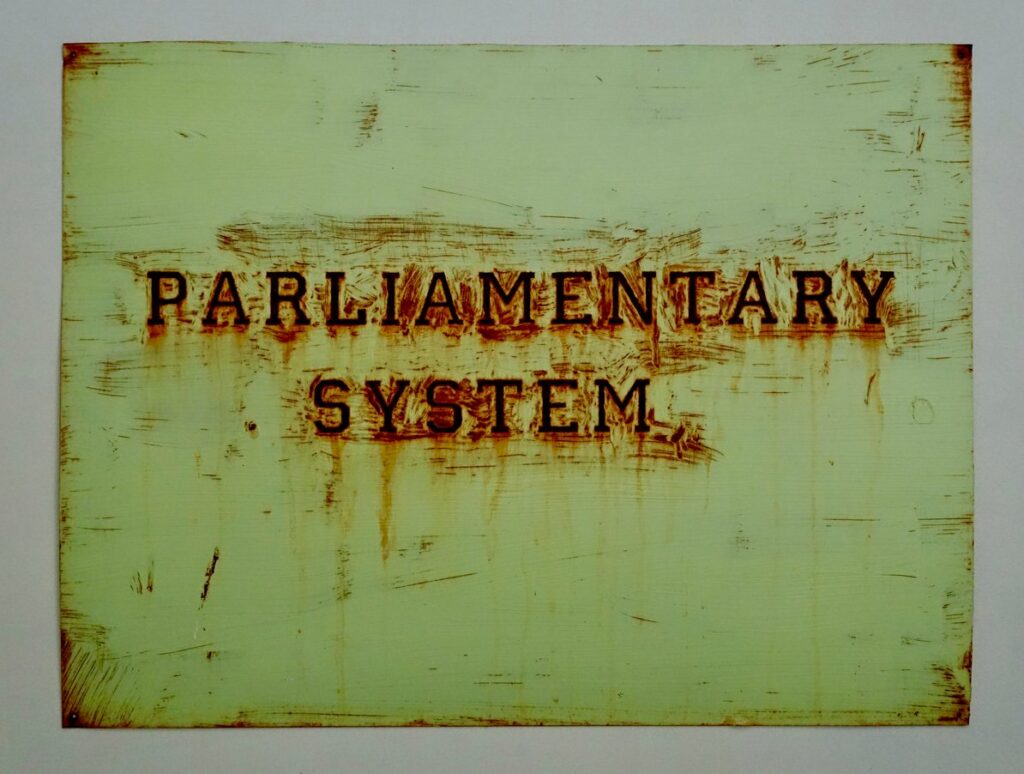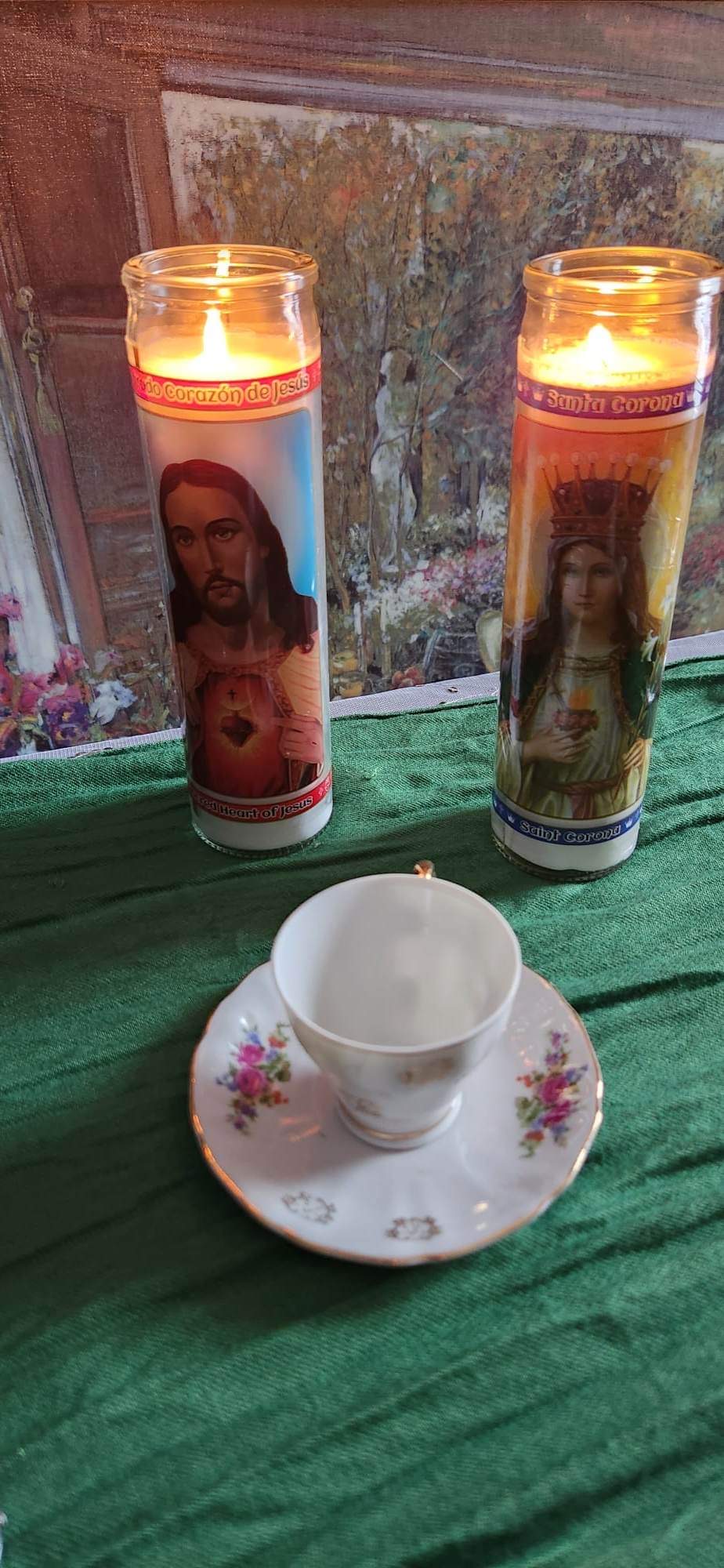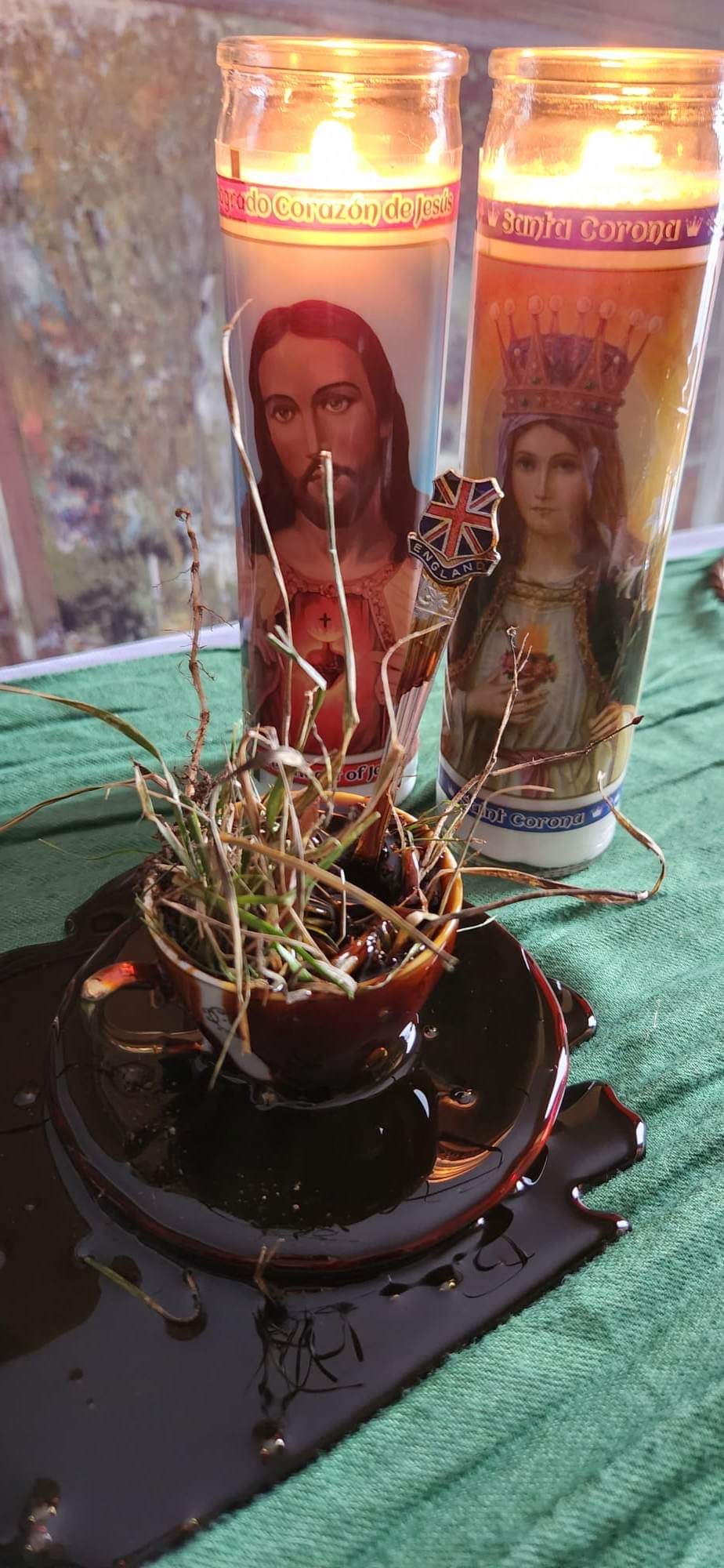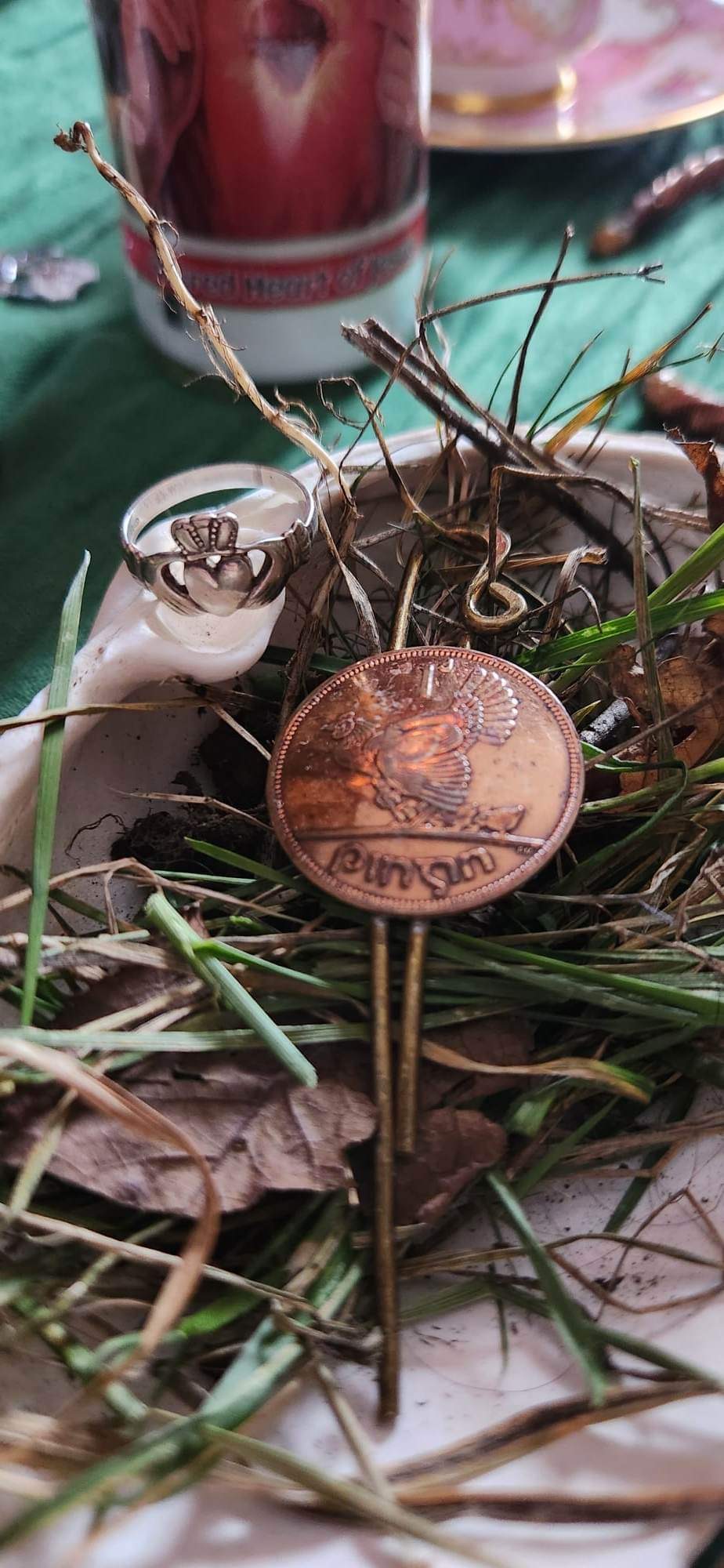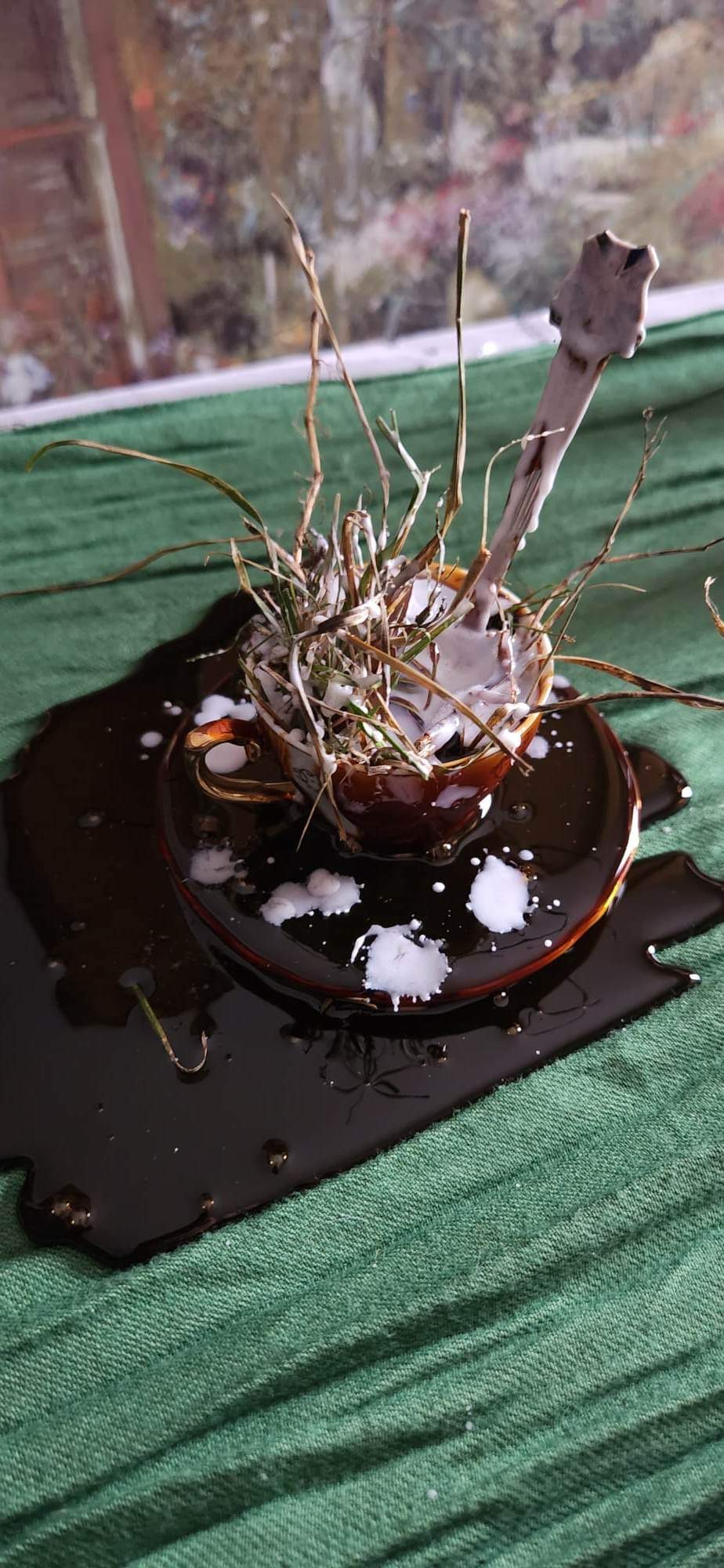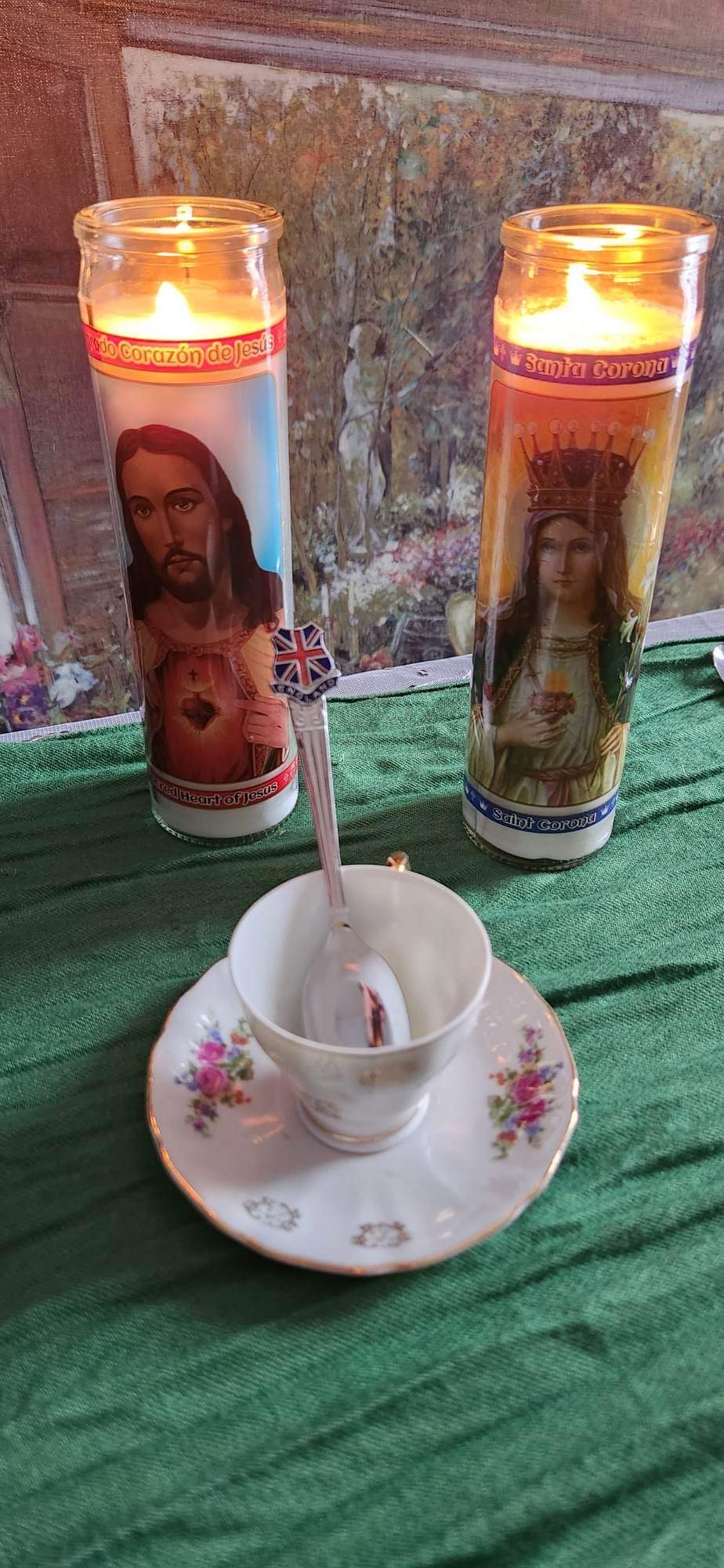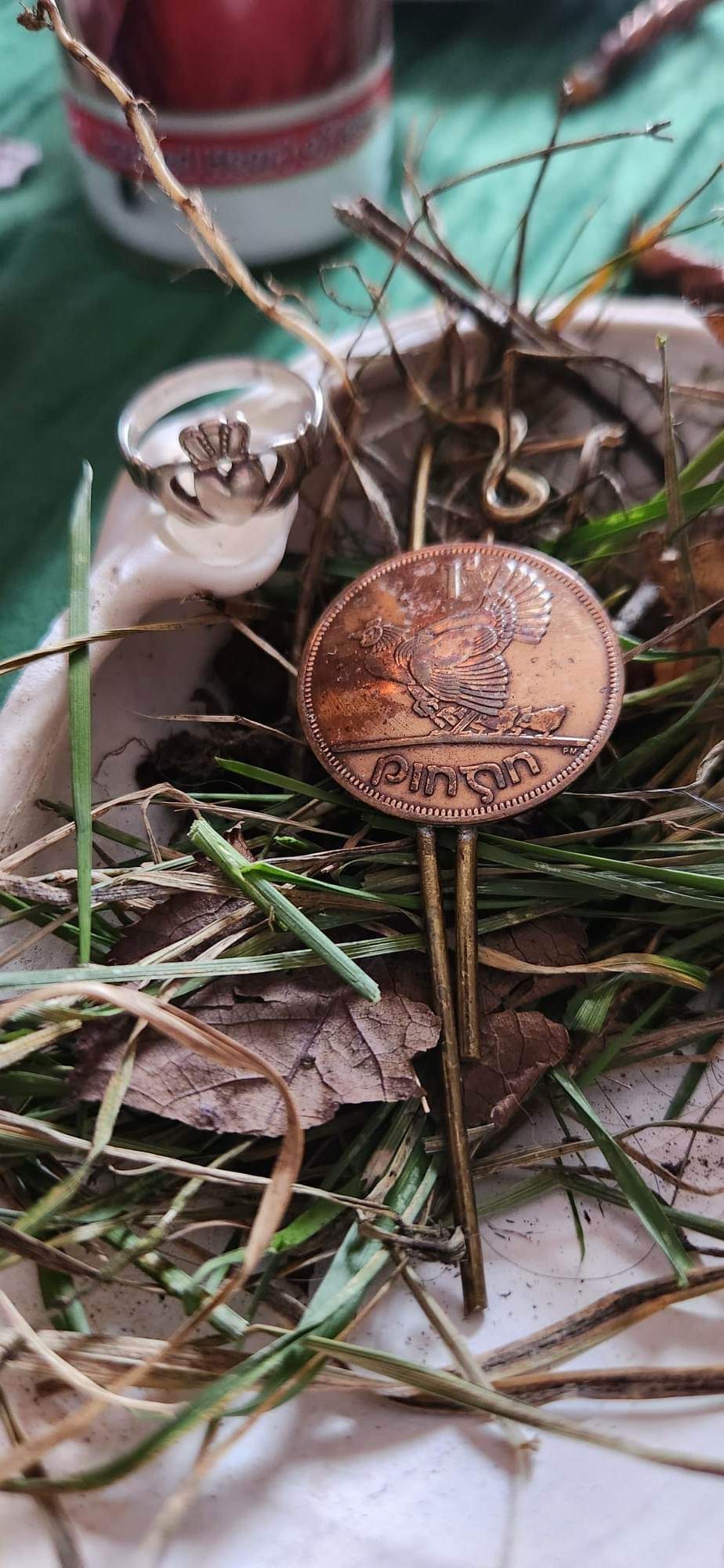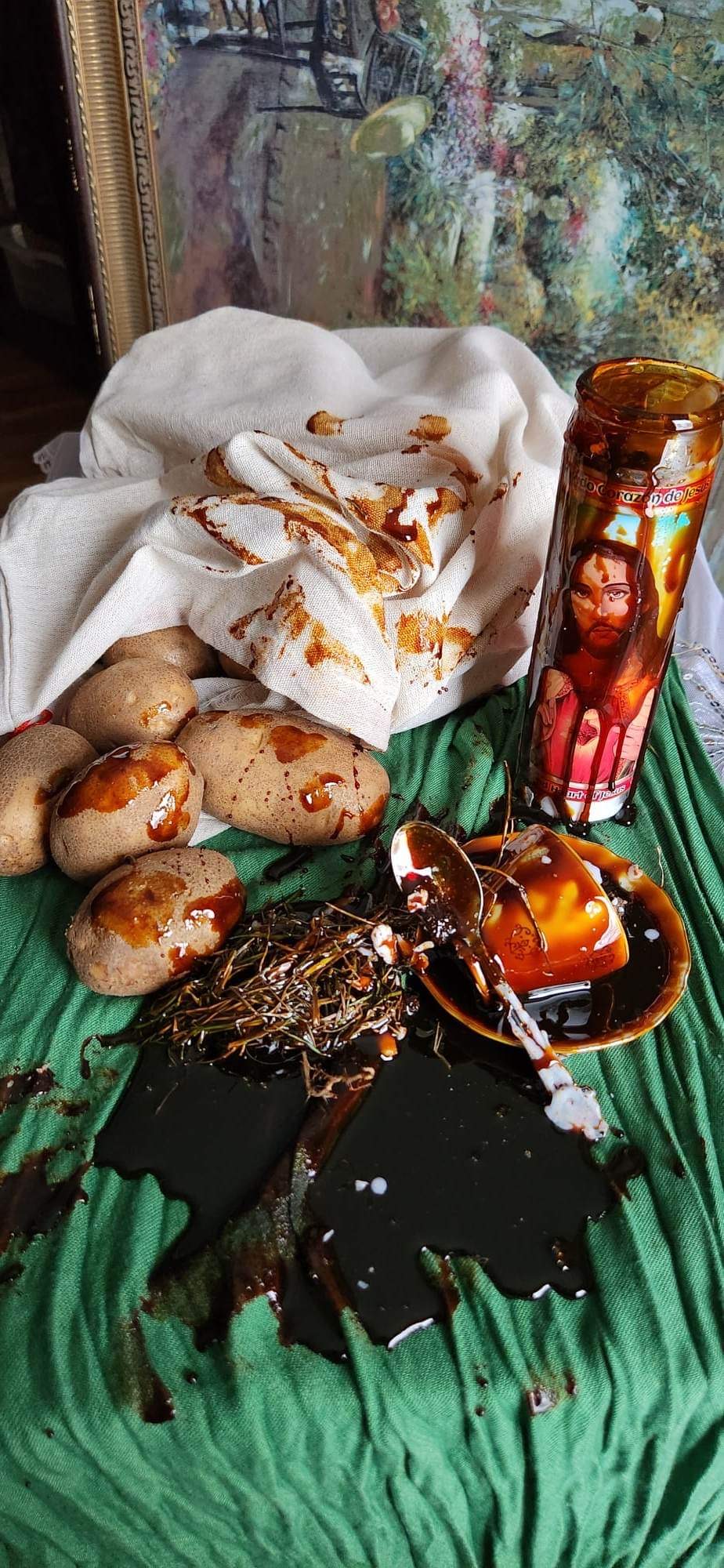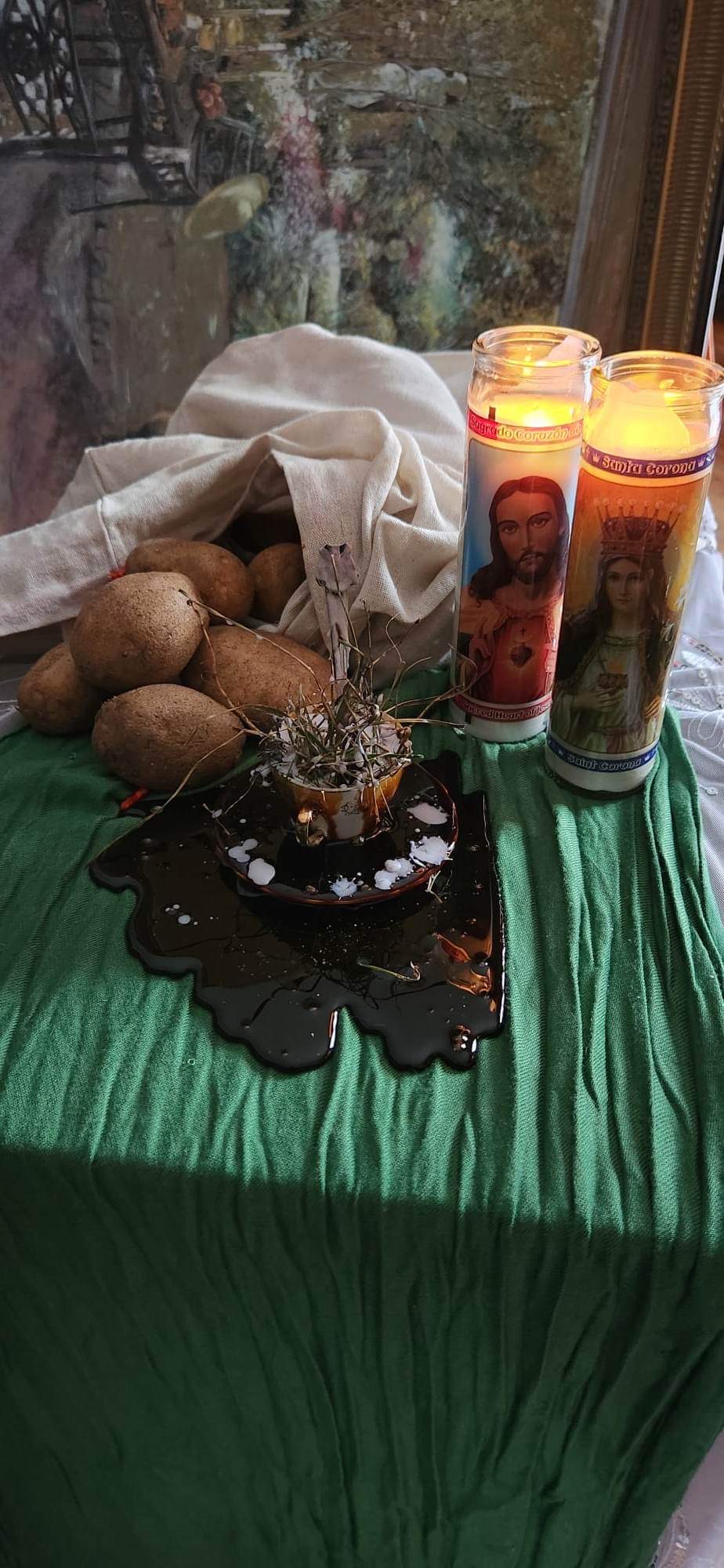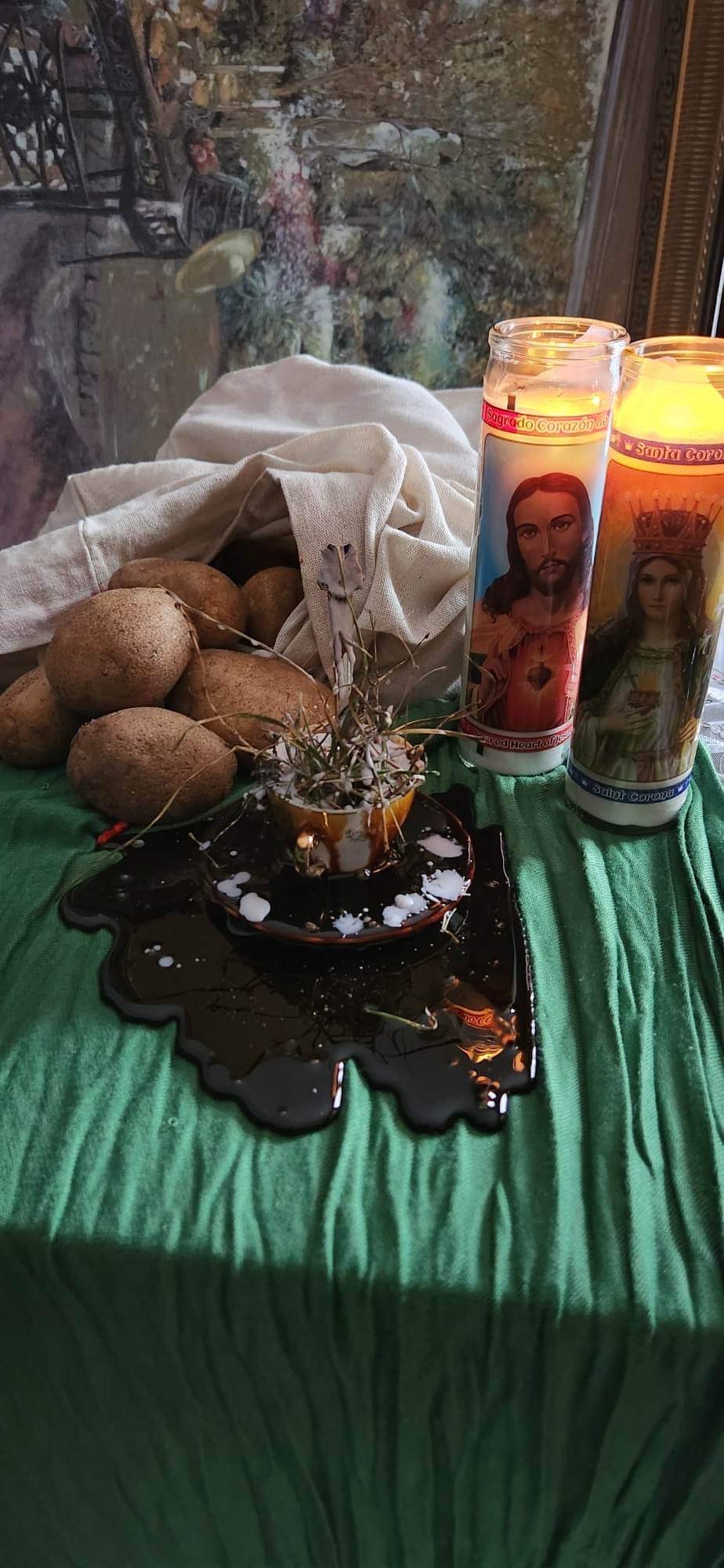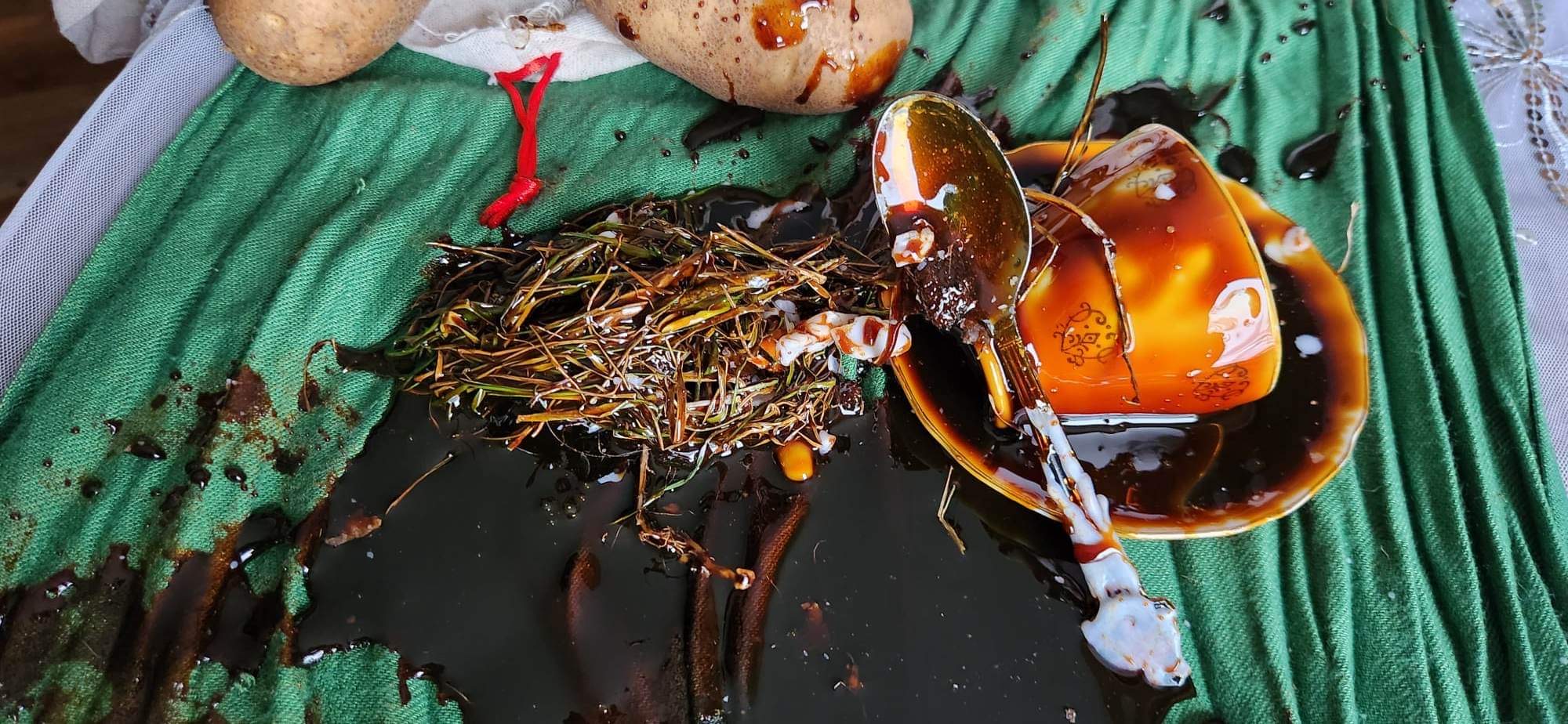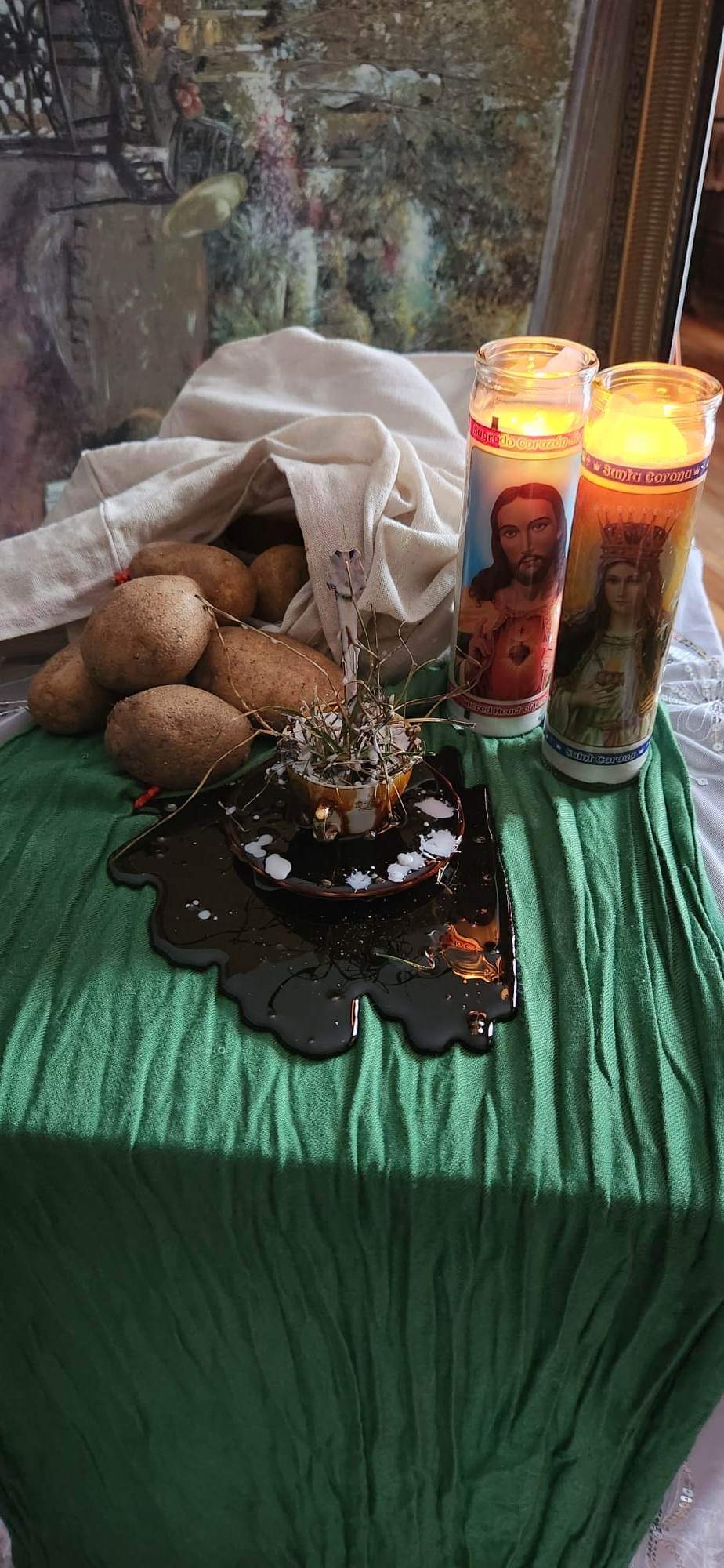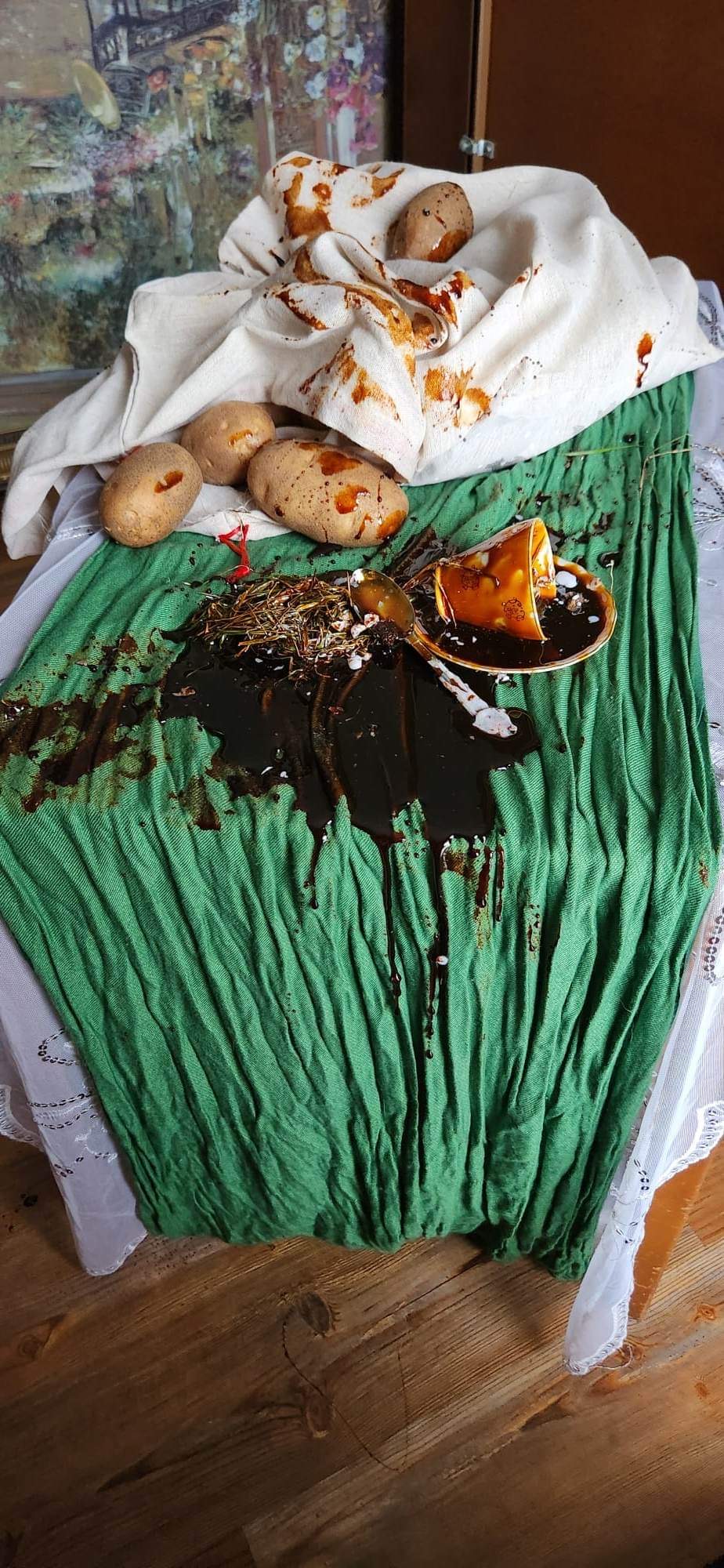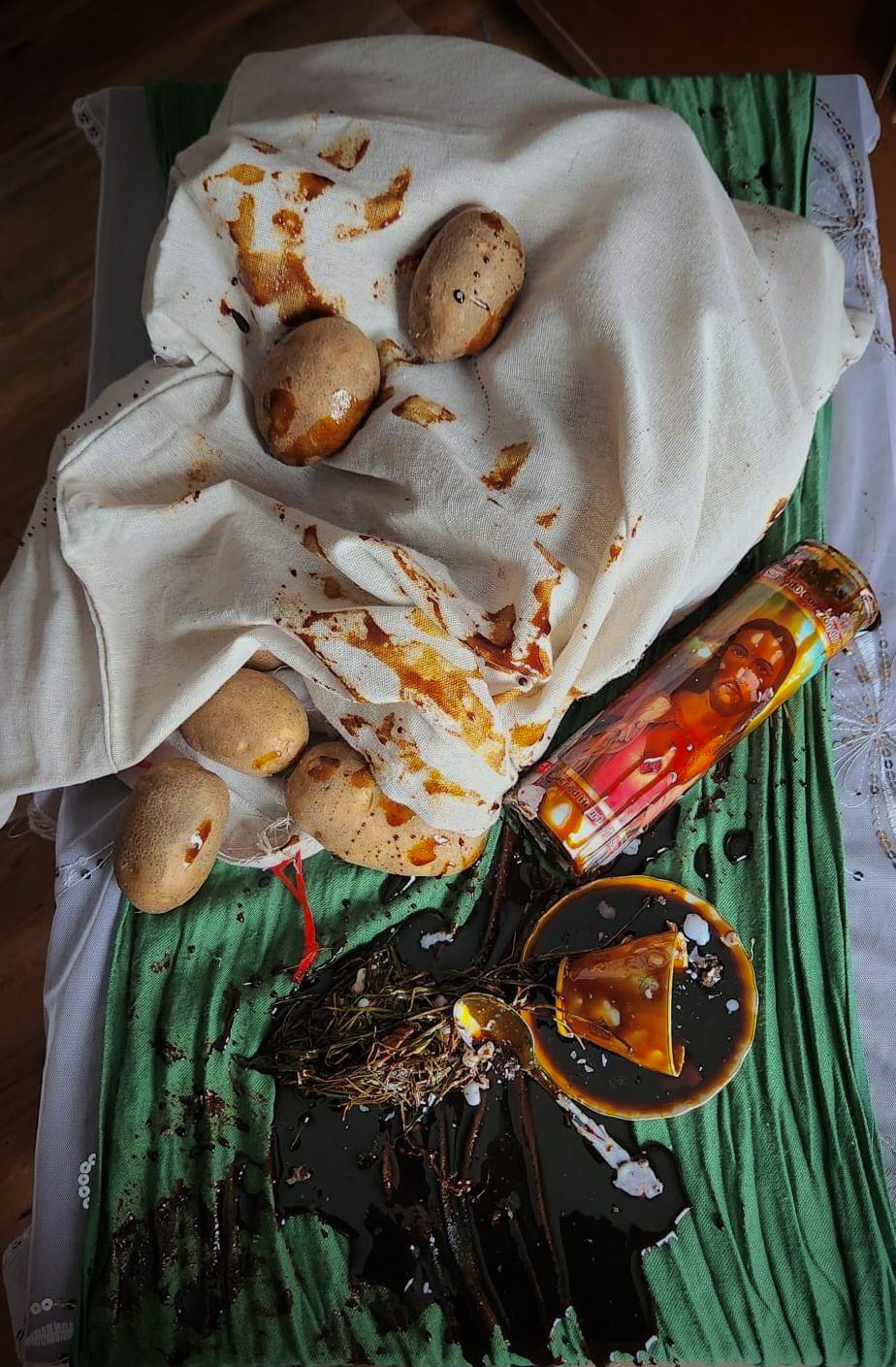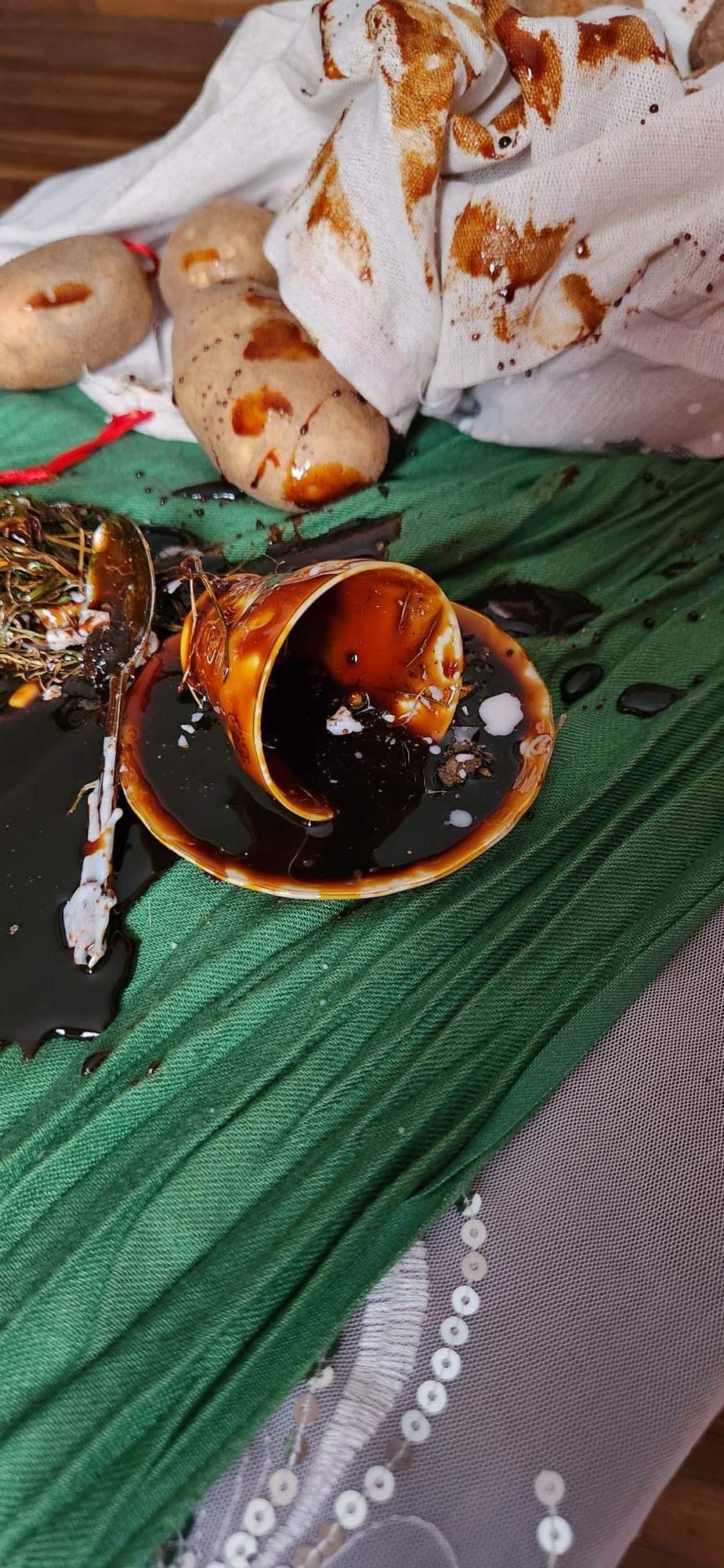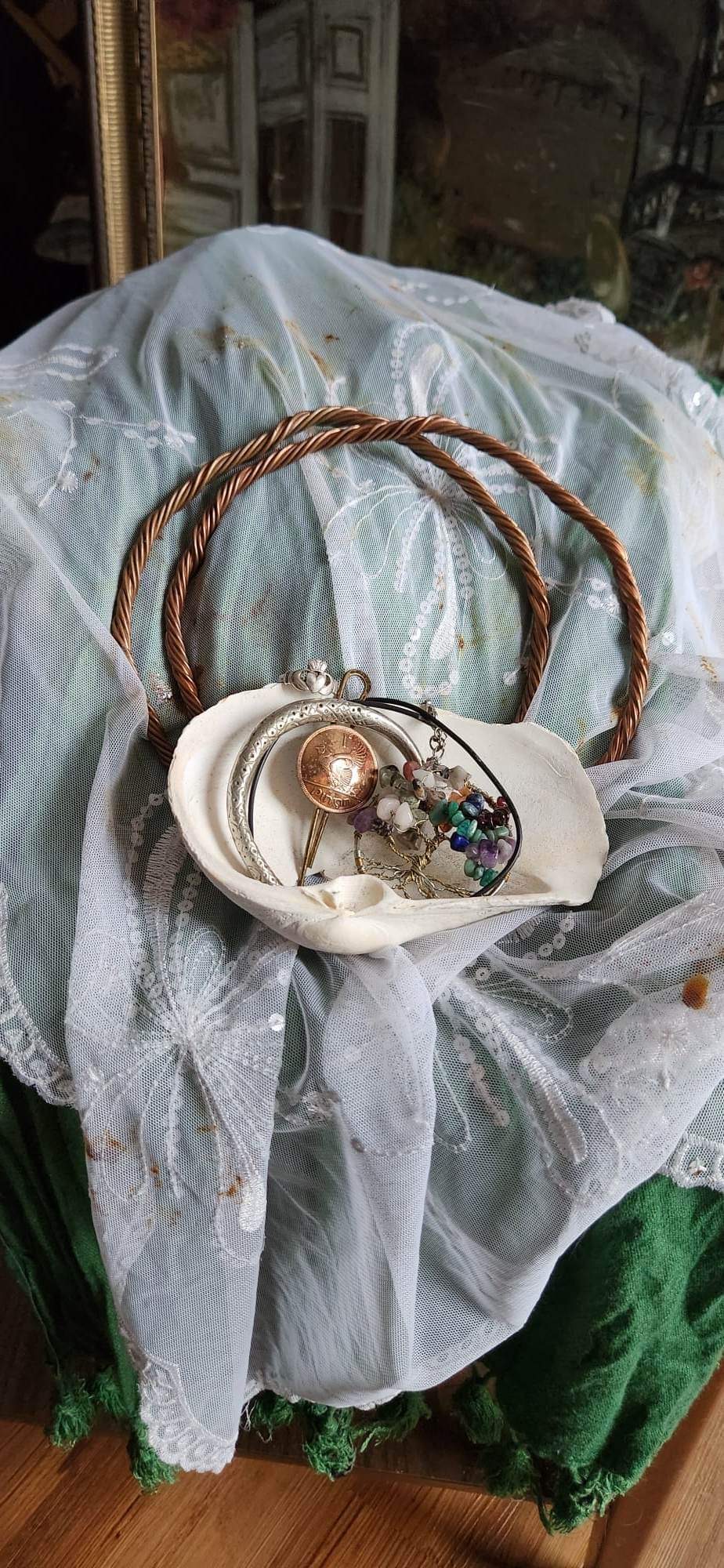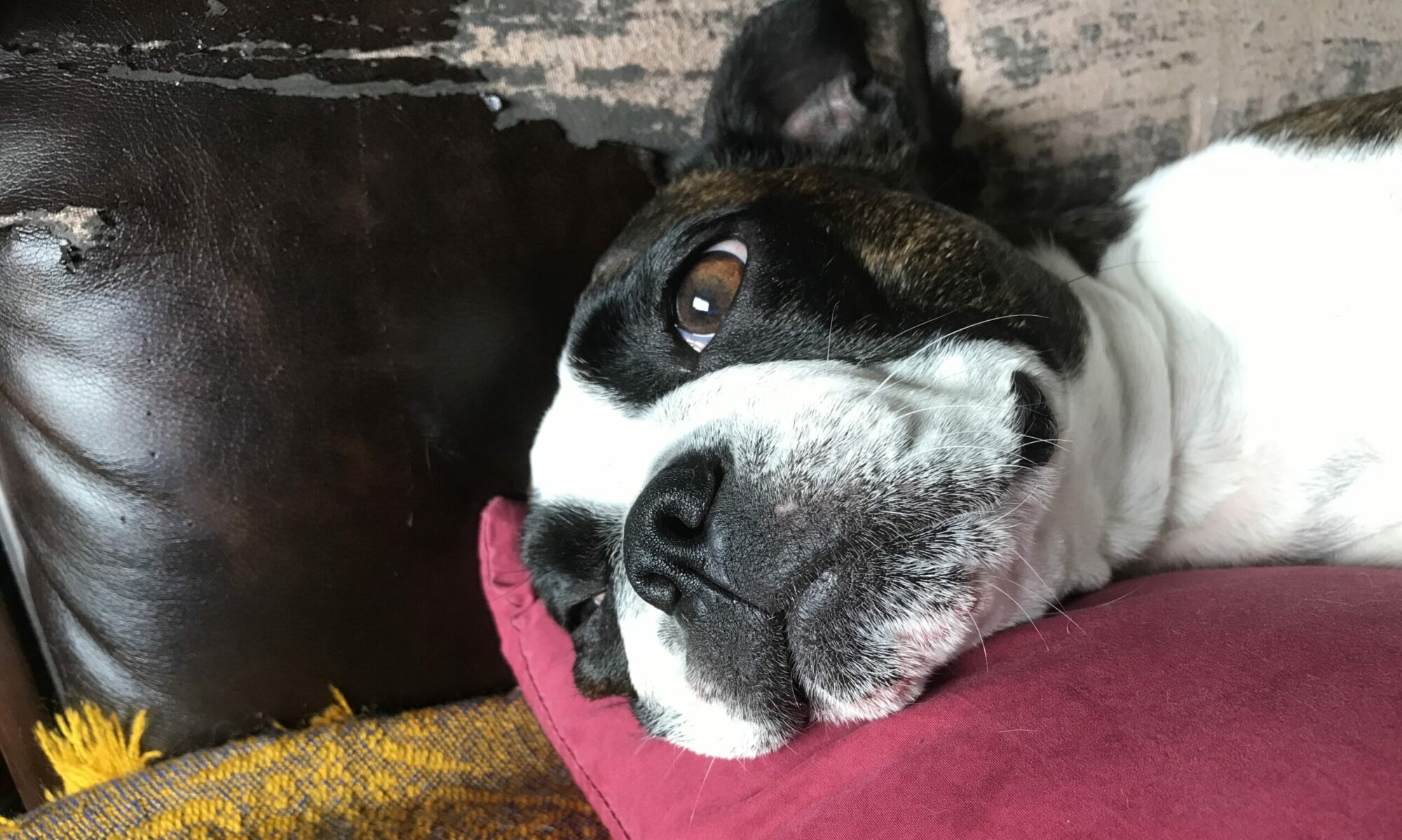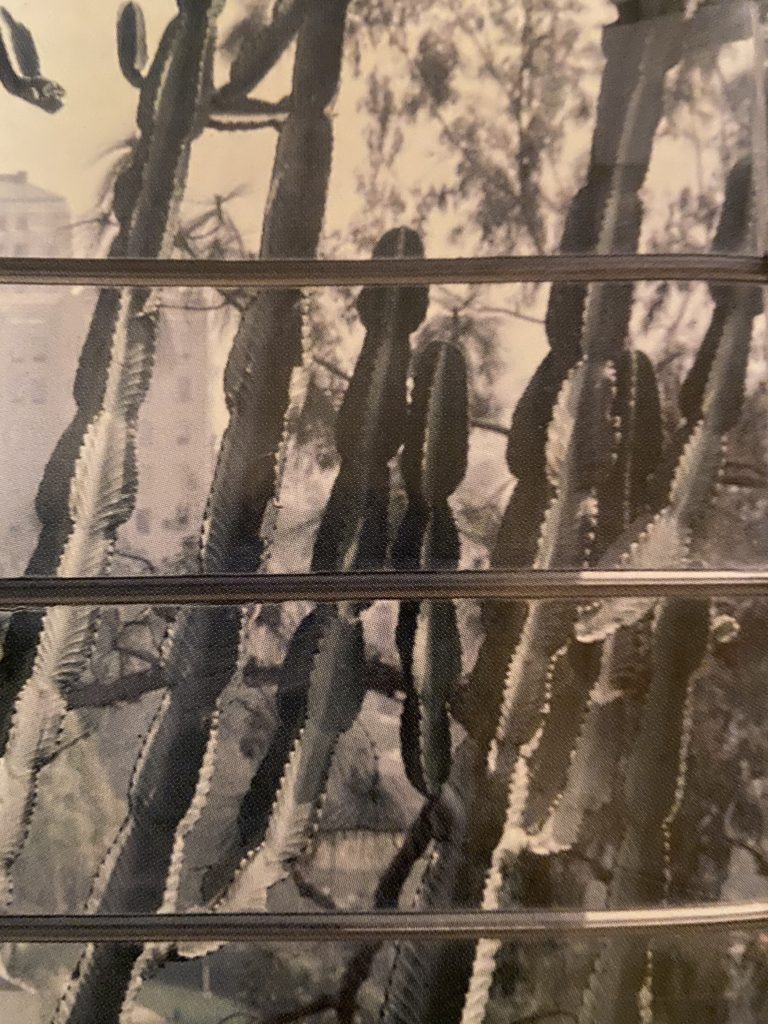FIN 201 Unit 2
FIN 201 Unit 1
FIN 200 Unit 2
FIN 200 Unit 1
FORMAL ELEMENTS IMAGE SEQUENCE + ANALYSIS
Formal Elements Analysis (Sequence 1)
Colour Palette:
The colour palette for the entire sequence is predominantly grey scale with subtle tones of green and blue. This colour scheme creates a quiet, moody and banal feeling to the series.
Scale + Perspective:
In the first panel the composition features a small figurine of an old woman, however the interior space and window fit her scale and the perspective is shot at eye level; these two elements allow the viewer to feel like they inhabit the same imaginary world. Scale and perspective are accentuated again in the final panel, where we have a bird’s eye perspective, and we are looking down at an urban landscape with a large gravel lot. There is one tiny figure alone on a park bench. The scale play is evident as the props and figures feel like they are from a small miniature world.
Negative Space:
The play of negative space is a main compositional feature for 5 of the 6 panels, which lends the series an ethereal feel. The negative space shifts in the composition from panel to panel – this gives a feeling of unease.
Depth:
For depth there is a play of push and pull in the sequence. The first panel, the small interior space with the old lady invites (pulls) the viewer in, we are in her space. The second and third panel are both abstracts that play with textures and text, there is minimal depth and the viewer is pushed to the surface. In the fourth panel with the interior of a room with a luminous window pull us in again. The fifth panel pulls us in further with the play of two-point perspective and the receding lines and columns moving back in space. The sixth panel pushes the viewer back out, we feel contained by the bars and prickly cactus make us feel trapped and claustrophobic. The final scene we feel pushed away completely as if we are hovering over the urban scene from the sky, the image is out of focus that is a play of atmospheric perspective, the elements offer the viewer a floating sensation.
TECH EX: VIDEO FX Colour + Blends
This is an assigned tech exercise the learn Premeire Pro software where we explore Base Colour correction and FX Blend Modes.
FIN 135 Unit 1
FIN 145 Unit 3
FIN 145 Unit 2
FIN 145 Unit 1
FIN 140 Unit 3
PROJECT 3
SELF DIRECTED PROJECT OUTLINE WORKSHEET

ARTIST RESEARCH 03
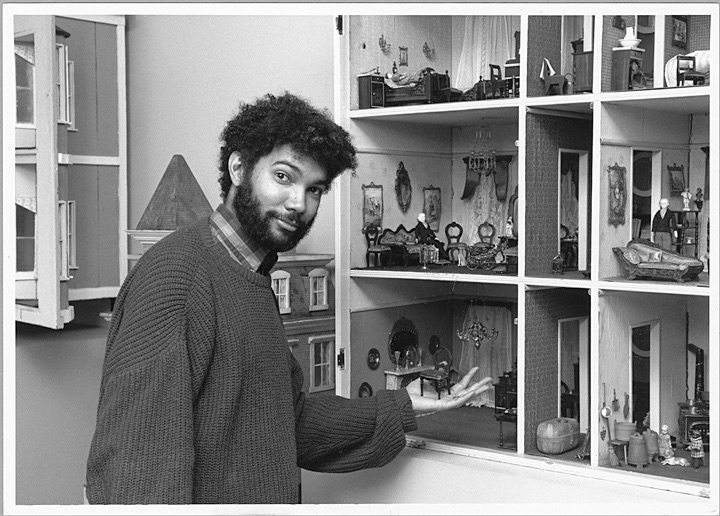
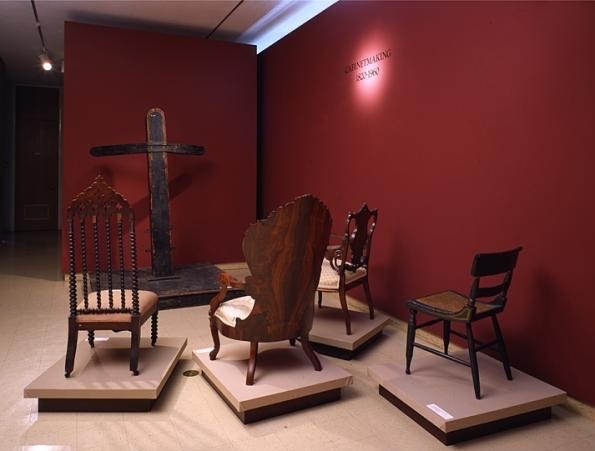
Fred Wilson : Cabinetmaking, 1820-1960
- Fred Wilson was born in 1954 in the Bronx , New York
- He received a BFA from SUNY Purchase College, State University of New York in 1976, he was the only black student in his programme.
- Wilson works in various art forms including painting, sculpture, photography, assemblage and glass blowing. He is renowned for his installation work in various museums using their own objects on display and in storage, which critics coined “Museumist Art”

This installation consists of antique Victorian chairs on plinths positioned at an observational distance around a wooden whipping post. These period pieces are all dark woodwork which are found objects which were hidden away by antique cabinets he brought out from the historical society’s archives. The walls are dark red and the floor and plinths a light cream wood. The vinyl label on the wall above the chairs features the dates 1820-1960 with no other information on it. The caption is titled “ WHIPPING POST, Platform and post, Gift of the Baltimore City Jail.
which refers to how long the punishment was in existence in Maryland. The post was infact used against men accused of infidelity and was not at any point used to whip slaves. The post is placed against the wall and is darkly lit compared to the antique chairs.
The positioning of the chairs in front of the whipping post creates an uncomfortable dialogue. By removing any reference to the pieces and their possible connection he’s made the viewer critically think about it for themselves. By the grouping it suggests that these elements are directly linked together , and the juxtaposition of these pieces places the viewer as a voyeur, a participant in a historical travesty that we assume happened. Without the historical history of the pieces, we are faced with the symbolic history and perspective.
By repurposing and displaying museums artifacts and objects , without any information to go by we are made think critically for ourselves. Our brains are so predisposed to seeing certain objects in certain settings as factual and evidence that we do not think of them as anything but that. This form of “trumpe l’oeil” curating creates within us an internal dialogue that is purely personal based and speculative. The use of lighting on only the chairs puts the focus – and points the visual finger at those who sat and participated in these horrific sessions, and visually represents the hidden aspect of the racial abuse, and infact the culture and people by colonial society. By placing torture devices in a public space and in this juxtaposition, the historical, cultural and societal narrative is forced upon us.
The Maryland Historical Society had a strong history of under representing and basically ignoring historical content from African Americans, Indigenous Charles Lyle- director of the Maryland Historical Society, was trying to find new ways to update how the history of the locality was being presented. Wishing to engage the culturally diverse community, he connected with the Contemporary Museum who brought Wilson on board.
During the 1980s, Fred Wilson was known for creating installations of “mock museums. The Society gave him full access to their entire archives and storage facilities. “Mining “ these various objects and placing them in ways which we are used to seeing, but with his own information. New additions of the African American individuals information, objects that were never displayed , and people that were never represented were now placed in the spotlight and joined their colonial counterparts on an equal level for the first time.
Watching videos and reading about his “Mining the Museum” installations, this piece immediately stopped me in my tracks. The starkness of the colours and lighting made it hard to see the post, I thought it was a cross. The immediate emotional connection I made to the piece is from my own perspective , experience and cultural narrative. It reminds me of a church, with the chairs positioned like pews , the post in a position of worship and focus. Even after learning the post was infact used only against men accused of infidelity , the curation of these pieces together elicits a strong emotional response. Sorrow, loss, heartbreak and that collective psyche of our people being wiped out, forgotten, reduced to stereotypes for colonial societies pleasure and entertainment. The darkness of our forgotten people who were ripped from our homelands to serve colonisers and their brutal regimes, whilst facing the hand those ancestors had in the systemic abuse of his people. Tough piece to process!!!!
I love the idea of reusing and repurposing objects. Museums are always displaying objects from colonial history , and religious artifacts from the main religions. The fact that the main people ‘ societal /religious structure can dictate how and who’s history is represented creates an extremely one sided dialogue , in which some don’t have a voice.
Wilson has a deep understanding of Museums, his parents initiating an early connection with them. He seen how their displays were Eurocentric and how African American historical items and people were often left out or misrepresented. Only showing a primitive lens or racially charged acceptance the museums that surrounded him as a child did not represent him or his people, who’s homes surrounded them. He seen the disconnect in Black society and these places and decided to flip the narrative to both highlight the role of the African American in American and world wide society- and bring attention to the racial discrimination displayed consistently in these places and monuments that are supposed to be archival references.
Gaining access to museums archives and storage, he sets out to display objects in the familiar form we know, but juxtaposes them in such a way that it represents a wider audience, and now gives a voice to his and other people so often excluded or misrepresented by the Western Canon. He removes the romanticization of P.O.C and the “exotic, primitive “ view , and forces reflection on their role in colonization. His way of “seeing” the Art and historical world, and not seeing anything that represented himself other than racially charged stereotypes. Seeing names and information of black people in historical paintings excluded but the white people included, spurred his exploration into wanting to know the real history, and give his people a voice in todays society.
The whole concept of using the museums own archives and bringing out what they have hidden or neglected is incredible. Using objects that have always been there brings a charged light to the western canon and their colonial standards.
Repurposing , renewing, giving objects new energy is amazing. I was really in two minds with my project but after finding Fred Wilson I knew what I wanted to do. I have little collections of things already, but I find the method of collecting, adding, subtracting until it feels right something I really can engage with.
PROJECT -03 RESEARCH AND BUILD
PROJECT 03 RESEARCH AND BUILD
How does this naming add meaning to the work and inform the viewer?
- Caoineadh na Marbh means Lament/ Caoine of the dead. It’s a traditional Irish style of Sean nós singing that was only for funerals. Keening is a style of crying and wailing in honour of the dead person, and was a valid profession in the day. The song I’m going to use is Caoineadh Cine-Ancestral Keen . I was thinking of Invocation, Relic, but these are too specific – brainstorming for the win
You must provide documented support of your research and process
- Documentation will be done by taking photos and video of the various stages of exploration.
- Save photos and written documentation about the Gorta Mór – I weighed out the exact amount of potatoes written that Irish women ate everyday.
Room for Experimentation
- There are no limitations on the layout, scale or medium of the work.
- Well my daughter said I’m not allowed smash the spuds onto the china so there’s one lol
- Take RISKS … think outside of the box! Try 19 different ways until you start to see it as new!
- Become part of the process and the art. Went to thrift stores and took a plate or cup from every china set they had so they’re worthless – cathartic
- Consider your intent of the work, what are you trying to communicate to the viewer?
- My intent is to explore my feeling of disconnect and how watching colonialism here forces me to analyze both our own colonial history , but our role in it in foreign lands. I wish to emote the loss and process of grief and sanctuary in which we lay on the funeral rituals back home- whilst processing my own loss and grief of culture.
Key Concepts
- Using familiar objects in a way that coveys the emotions those of us who suffered under colonialism feel every time we see these reminders. To invoke critical thinking by leaving it up to people to decide what it is and what is happening, so that they’ll concentrate on the symbolism of the objects rather than their history.
- To use my heritage and cultural artifacts in a context of emotion and solemness juxtaposed to the everyday objects found in most colonial societies house- to make them think about the power of objects and their symbolism, and what it actually means to be Irish .
BRAINSTORMING UNIT 01 AND 02 IDEAS
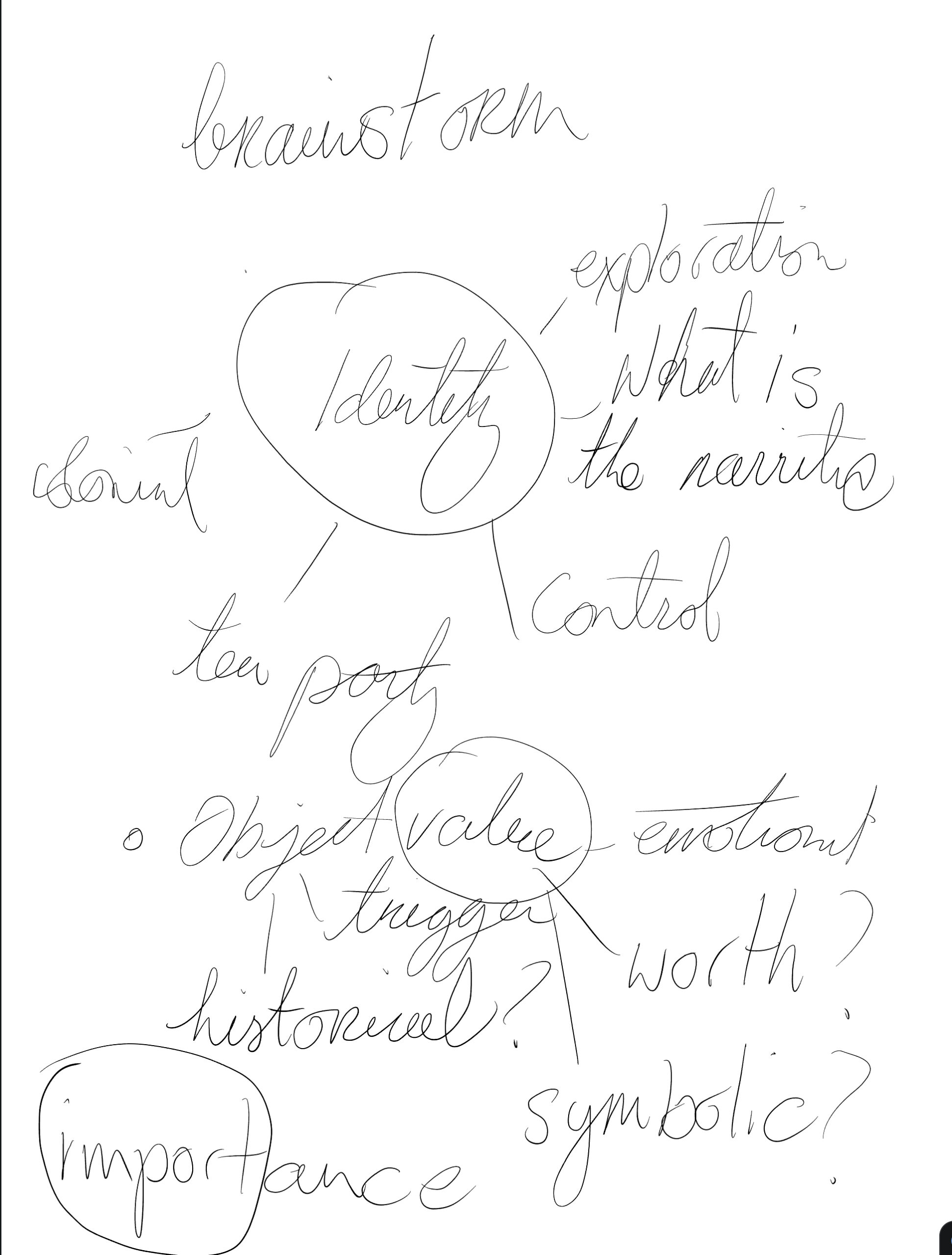
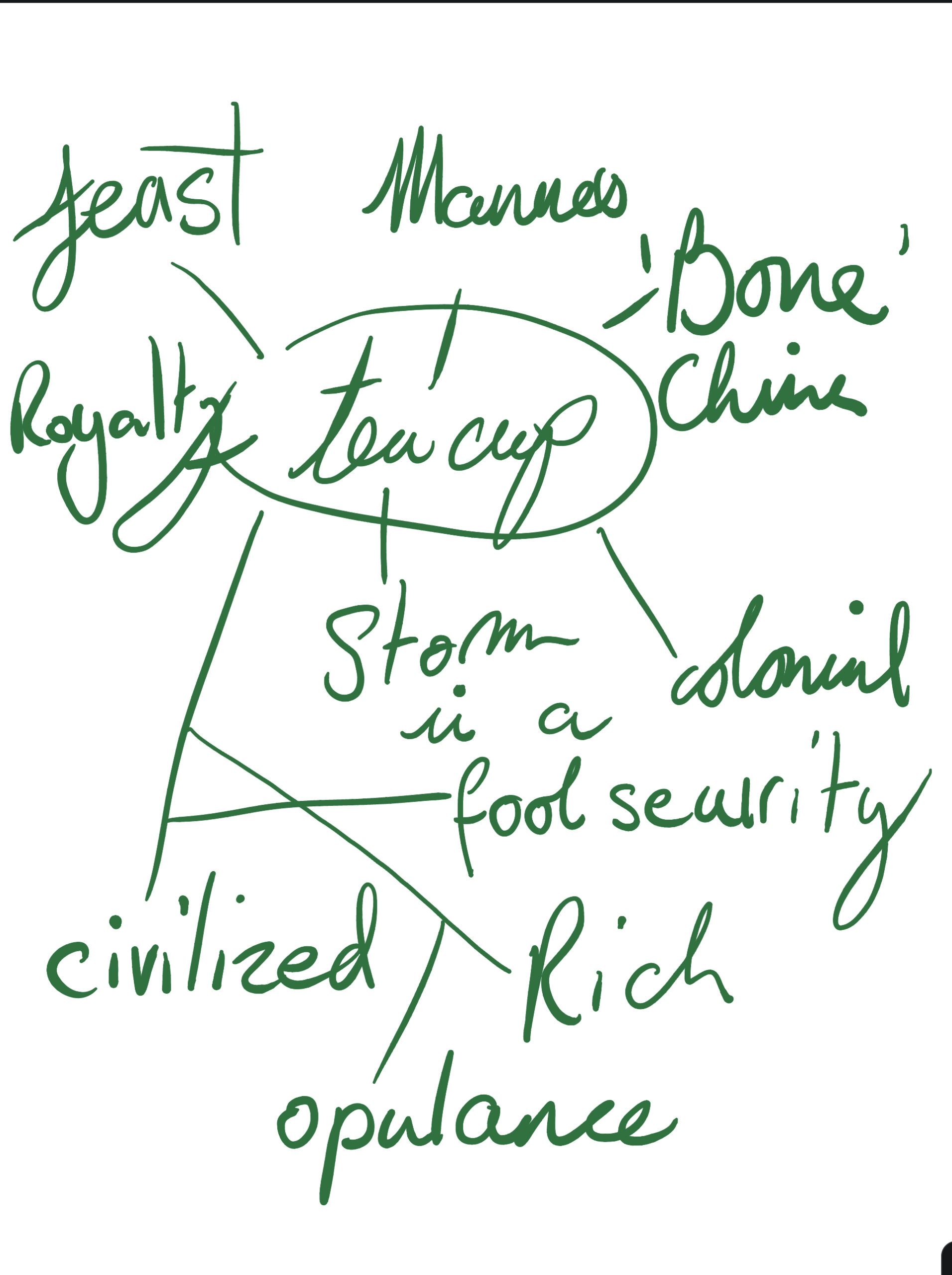
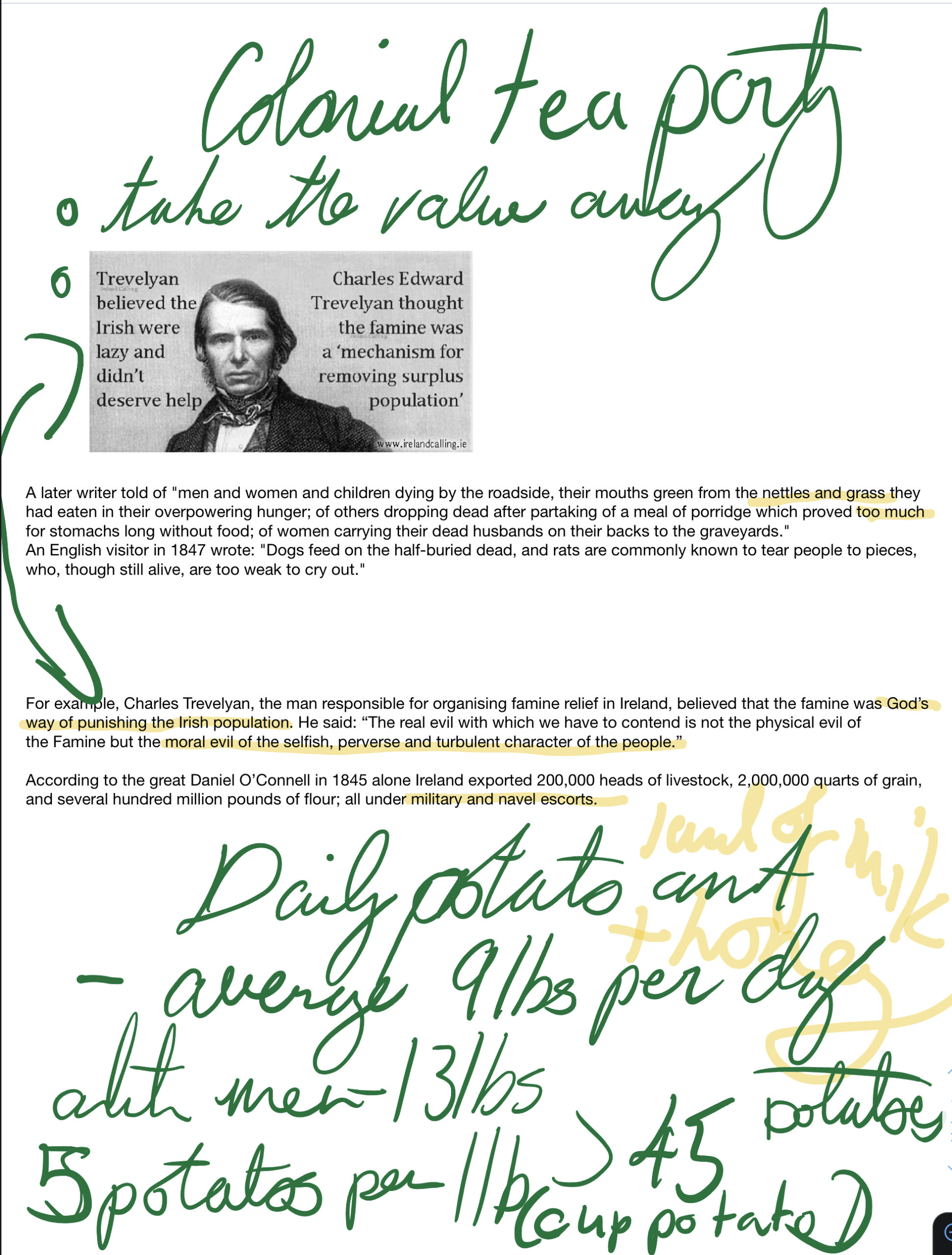
ARTISTS STATEMENT BRAINSTORMING

Guest Artist reflections
Guest Artist Reflection 03
- Who is the speaker, what type of artwork do they make.
The guest speaker is Jeremy Borsos. He makes installation Art, frequently using repurposed found materials.
- How did the artist speak about their work and their creative process.
He spoke extremely well about his own personal thoughts and how he integrates his own ideals into his art form- and reversely how his art form expresses these ideals.
What artwork, concepts or ideas did you connect with, or if you did not connect with any why?
When he talked about not having any family or historical things passed down it really hit home. What do I have that my children will have that are part of who they are,.
- Did you learn of any new ways of working, collaborating and/or researching.
I learned that sometimes the simplicity is the object itself, not what you do with it. Giving it a voice by removing it and placing it in a new space opens dialogue.
- Did you learn of any new technical studio applications?
I loved his photographic work and how he takes photos to document and include. It’s something I’ll be working on for sure.
- Did you learn of creative opportunities that the artist utilize – grants, residencies and/or exhibitions.
None that I can remember
- You can also interact with this talk as a brainstorming session, what associations came to mind during the talk that could serve as a creative catalyst for your art practice.
Going to places and observing , noticing, taking in the objects in their form, repurposing these objects to create a link and circular timeline between the then and now I find amazing. The whole concept of the space which an object holds- and is held in has deep meaning and really makes me think critically.
